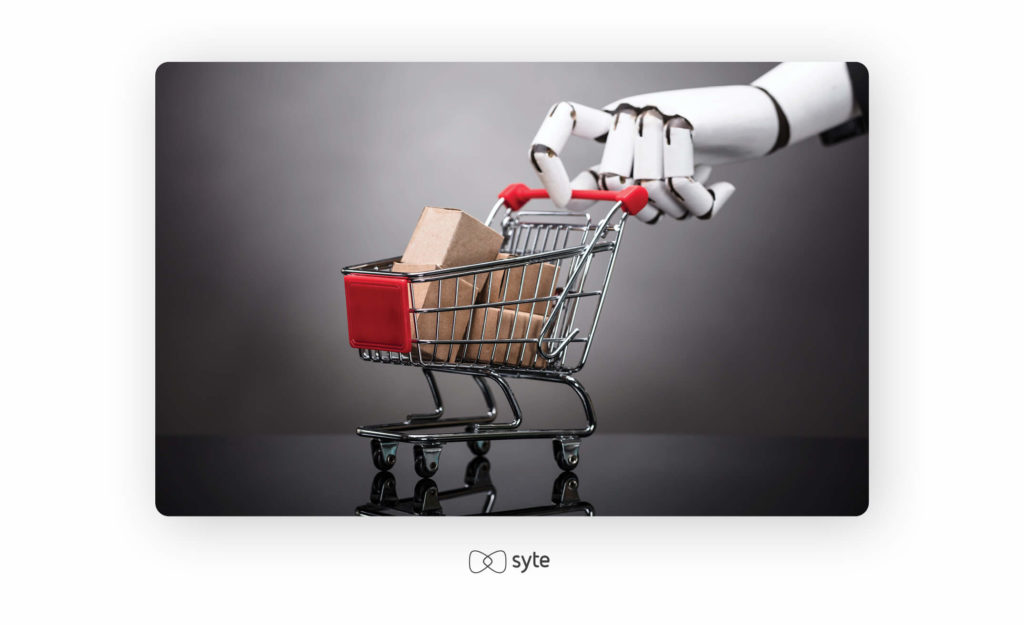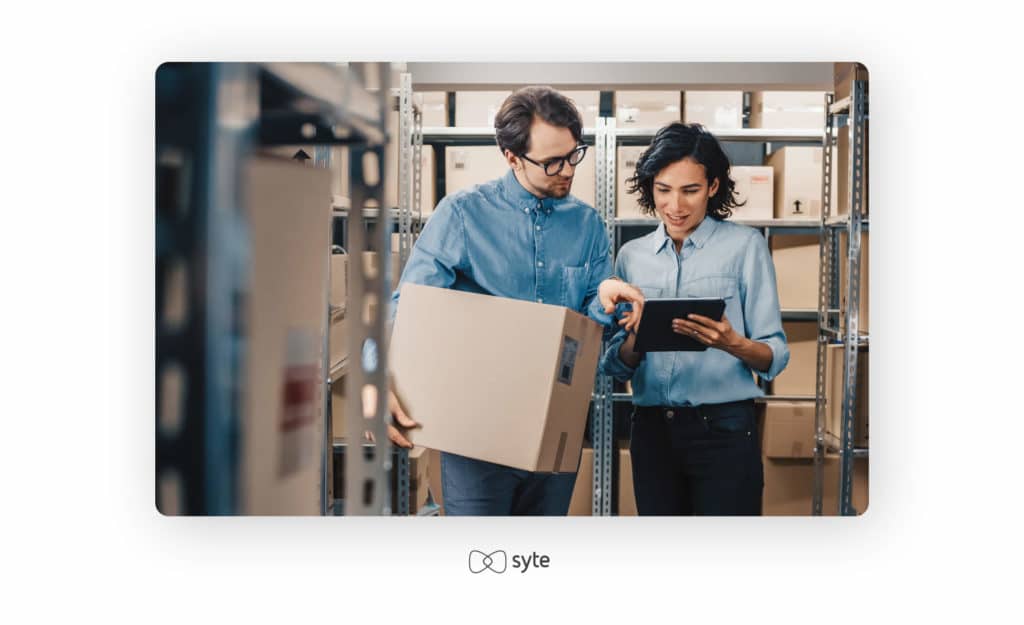With consumers spending an average of 54 seconds on a webpage, it can be challenging for online brands and retailers to retain shoppers’ attention throughout the customer journey.
Imagine a shopper discovers your brand through a positive online review. They learn that you sell durable, stylish footwear and also offer free shipping, which prompts them to visit your website. Upon locating the search button, they enter “metallic purple leather mules,” but find no matching products and go through page after page of irrelevant results.
According to Harris Poll research, three out of four U.S. consumers will abandon the shopping process after a disappointing search, resulting in lost revenue. About 48% will turn to competitors to find their desired items and 85% see a brand differently after an unsuccessful search.
This is where automated product tagging comes into the picture. Powered by artificial intelligence (AI), the technology accurately and efficiently tags thousands of SKUs. Serving as the backbone of your on-site search and filters, automatic product tagging can help to surface highly relevant products at the exact moment your shoppers search for them.
In this guide, we’ll cover everything there is to know about automatic product tagging. From challenges and advantages to the implementation process, and why AI tagging is a critical part of a successful eCommerce business.

What is Automated Product Tagging?
Product tagging is an essential process for any eCommerce business. It classifies and organizes items to help manage inventory and enables shoppers to easily find products they’re interested in.
The responsibility of product tagging usually falls on merchandising teams who collect data and assign attributes to products to manage their inventory. The metadata includes every descriptor possible, including color, style, size, brand, and more.
The procedure is typically completed manually by entering one attribute at a time in a database. The tedious process takes up time and energy especially when a brand or retailer has thousands or millions of products.
Automated product tagging powered by visual AI takes the process to a whole other level. By harnessing deep learning, neural networks, and advanced image recognition algorithms, AI technology can automatically generate metadata based on visual attributes and make associations among related keywords without human intervention. This saves valuable resources for brands and retailers and addresses potential errors that are unavoidable in manual tagging. Labels are thorough and accurate, improving on-site search performance, navigation, and merchandising. As a result, customers have a smooth shopping experience and can discover the right products at the right time. This fosters trust and brand loyalty and encourages more purchases.

Product Tagging Challenges in eCommerce
Manual product tagging hinders efficient inventory management in a number of ways, including:
- More time and effort. Manual product tagging is time-consuming, particularly for online brands that have thousands or millions of items. The tags also have to be updated regularly. An unorganized and outdated catalogue resulting from poor product tagging can result in shoppers not finding the products they have in mind. It also impacts inventory insights and inventory planning.
- Human error. Manual tagging is subject to mistakes, and the margin for error is directly proportional to a retailer’s inventory size. De-prioritizing the importance of accurate inventory tagging inadvertently leads to more inventory discrepancies and expenses.
- Expensive. Large stock volumes require hiring additional staff to handle product tagging. This is necessary to ensure your catalogue remains organized and up-to-date and can be quickly rolled out on your site. Not hiring enough employees to manage inventory and tag products can cost brands valuable time and money that can be spent elsewhere.
- Incomplete and inconsistent. Tagging a significant amount of SKUs efficiently and immediately is no walk in the park. Brands have to synchronize different categories, styles, and attributes from various sources. Identifying themes and retail trends is more difficult in manual product tagging, which can lead to missed revenue opportunities.
Thankfully, these hurdles can all be solved through automated deep tagging. Tags extracted and assigned via AI are immediate, intuitive, and accurate. When set up right, they can be used to determine patterns and predict trends. Automated product tagging is also less prone to human error and can bring products to market faster, unlocking more opportunities for brands and retailers.

How Automatic Image Tagging Works
The advances in AI and machine learning are providing more efficient approaches to tagging products. Visual AI is used in various solutions such as recommendation carousels and camera search. It’s capable of dissecting images to minute details, detecting areas of importance, and assigning appropriate labels in text form.
Used in various verticals including fashion, jewelry, and home decor, the effectiveness of visual AI-based product tagging relies on the analysis of millions of product images and describing each of them. Implemented correctly, your catalog will be rich with accurate, elaborate, and up-to-date product tags.
With visual AI trained to see and understand images like a human, product tags can help categorize products with pertinent metadata at a granular level. And there’s no limit. A dress won’t only be tagged as “red,“ “size 6,“ and “formal,“ but also “satin,“ “lace,“ “ruffled,“ “slim-fit,” and more relevant fashion labels. This process is completed almost instantaneously, regardless of your inventory size.
Through rich lexicons based on visual data, you can add more sources for catalog metadata extraction over time. With in-depth tags, you’ll get better insights into the supply and demand of your SKUs, better manage your inventory, predict future trends, and improve the shopper experience on your site.

The Importance of Automated Tagging in eCommerce
In 2021, 74.3% of U.S. consumers made an online purchase, and this figure is expected to increase to 80.4% in 2025. With more shoppers preferring online shopping over other channels, it’s become crucial to deliver seamless and memorable shopping journeys and meet customer needs. Automated product tagging is among the solutions eCommerce brands can use to ensure customers find the products they want at the very moment inspiration strikes. As is stands, 61% of all sites perform below acceptable search performance and misalign with users’ actual search behavior and expectations. By using data from product tags, brands and retailers can boost their understanding of consumer behavior and address the needs of individual consumers.
Shoppers are eager to learn about emerging technologies that will make digital purchases easy and convenient. According to the National Retail Federation (NRF), 80% of online shoppers and 63% of mobile shoppers think that new technologies and innovations improve their experience. Some areas they would like addressed include stock availability, price comparison, meaningful shopping experiences, product discovery, and product recommendations – all of which automated product tagging can manage and improve.

What Effective Product Tags Help Achieve
From better search results to personalized recommendations, deep tags boost your eCommerce shopping experience in the following ways:
Lay the Groundwork for Seamless Product Discovery
Many things make up a stellar product discovery experience, but one of the most important is connecting customers to products when they need them and at the right moment. Product tags help achieve this at multiple points of the customer journey.
It can be when surfacing relevant SKUs for shoppers who use the internal search function, an indispensable feature as 43% of users go directly to the search bar when shopping online. For some retail sites, 40% of total revenues is attributed to search. Descriptive tags make the process more intuitive and less time-intensive because shoppers can easily filter results using specific categories and subcategories.
Robust tagging also improves your ranking on external search engines. Statista’s Global Consumer Survey shows that 55% of U.S. consumers turn to search engines such as Google to find information on a product they want to buy. The right keywords and rich site database used to boost your SEO will also increase the chances of customers finding you and your products off-site.

Help Implement Smart Merchandising Rules
Automated visual AI product tags enable brands to promote items that appeal to each shopper’s tastes and preferences. When consumers visit your website, they are given a set of suggestions with similar or related characteristics to the items they’ve shown interest in. These come in various forms, including a dynamic homepage that displays products grouped according to occasion, trends, or promotions. Shoppers can also browse thematic collections or prioritize search results so the best-selling or discounted items appear first. Valuable user-generated content (UGC) can appear alongside actual products. The combination of social media data and product tags encourages trust through social proof.
Promote Personalized Shopping Experiences
Convey an understanding of your customers by anticipating their desires and matching their expectations. The recommendations shoppers see on your site can be personalized with every choice or click made. Although almost 90% of retail marketers have adapated personalization experiences for their businesses, only a select few are leveraging the power of advanced technology.
A comprehensive product tagging system allows you to pick up on shopper intent by understanding the product qualities customers interact with. In highly visual verticals, brands can identify material attributes that draw customers in. Moreover, product tags can add another dimension to user details that serve as the basis for traditional personalization solutions, such as previous online behavior, demographics, and essential product data.
Optimize Inventory Management to Inform Business Decisions
Automated product tagging provides an overview of a brand’s performance, as well as insights into the popularity of both high-level SKUs and more specific attributes. Brands can make use of robust product tags to turn up better and more accurate analytics around sales, supply, and demand.
They can also capture shopper behavior and trends from different segments. Equipped with the knowledge of which products are selling fast and searched the most, brands can strategize prices and stock levels to maximize revenue and prevent waste due to overproduction. This naturally feeds into creating a more sustainable business as well.

Improve Efficiency and Redirect Resources to More Productive Endeavors
By automating product tagging, companies can free up the time and energy of employees and focus on other areas such as recruitment efforts or customer experience journeys.
With the product tagging process completed in a fraction of the time, brands can also get their products to market much quicker. This increases efficiency and impacts every aspect of the business — from marketing to fulfillment. Simply put, automatic product tagging helps brands be more cost-effective and maximize their resources.
Boost Conversion and Revenue
Automated deep tagging makes it easier and quicker for customers to find products they want or need. Even when there are no matching results, you can leverage product tags to set up solutions that can redirect shoppers’ attention to products with similar attributes.
Relevant product suggestions can encourage customers to stay longer on your site and find more items to buy. Brands can upsell or cross-sell even when shoppers are about to confirm payment. This increases the basket size and average order value (AOV). In fact, about 54% of retailers reported recommendations as the key driver of AOV.
Wrap-Up
To survive and thrive in a highly competitive digital landscape, businesses must foster a friction-free purchase process and understand consumer intent. With visual AI-powered product tagging, you can surface the right product at the right time and ensure a positive shopping experience for your customers.
At the end of the day, accurate product tags impact smart merchandising, internal and external search results, navigation, recommendation carousels, and inventory management. With an abundance of data and insights, you can confidently move forward and strategize pricing, marketing, and sales while driving customer loyalty and brand advocacy.